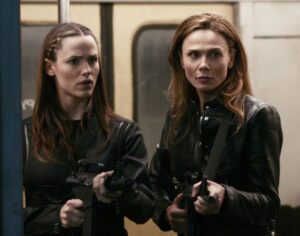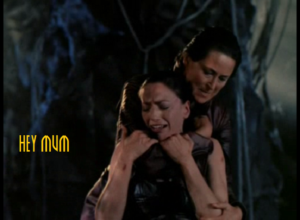Everyone loves a hero, am I right? A story’s centerpiece. The person destined to save the world. Likable. Relatable. Practically flawless at times…
Earlier this year, I wrote about a TED Talks video with J.J. Abrams. Around 12:20, Abrams advises us to invest in our characters. He says the focus of our own writing shouldn’t be on the big, flashy elements. Instead, he preaches that we rip off the characters. “Rip off the stuff that matters! Look inside yourself and figure out what’s inside you.”
I’ve been thinking about what draws people to a particular character. After all, it’s the qualities of a character that cause us to invest in their lives for 300+ pages, or countless hours of television.
Invest In Your Heroes
It’s easy to stereotype your hero. We all know the essence of what makes a hero. But we don’t always know how to give them a unique or memorable flair.
I suggest three main ingredients for creating a solid hero:
▪ believability
▪ conflict
▪ morality
 Even in the most far-fetched stories, believability still counts. If a character doesn’t feel real to me, I’ll move on to another story. In science fiction or fantasy, realism is still relevant to a degree. Without it, we won’t relate to our hero.
Even in the most far-fetched stories, believability still counts. If a character doesn’t feel real to me, I’ll move on to another story. In science fiction or fantasy, realism is still relevant to a degree. Without it, we won’t relate to our hero.
So how do we make a character feel real to us?
Flawed Realism
Personally, I dig characters with deep flaws. The more the better, but the deepest the best. I want to see my hero struggle. Make mistakes. Refuse to learn from those mistakes. Then, fall harder.
I honestly don’t think I’d care whether or not they fail their goal as long as I’m sharing the journey. And inner conflict is just as spicy as any outside conflicts.
Mommy Issues
Two of my favorite examples of hero conflict are Sydney Bristow (ALIAS) and Aeryn Sun (Farscape):
▪ Each woman grew up without her mother
▪ As a result, each created her own beliefs and ideals about her mother
▪ Each shaped her adult life around those ideals, mimicking them
▪ Both are destined to confront their mothers
▪ Through this, their ideals are shattered by the truth
▪ Both must now live with the knowledge that their mothers never wanted them
 I’m sure neither J.J. Abrams nor Rockne O’Bannon traded notes on their characters’ prospective story arcs. However, this example alone illustrates Abrams’ point about ripping off what matters.
I’m sure neither J.J. Abrams nor Rockne O’Bannon traded notes on their characters’ prospective story arcs. However, this example alone illustrates Abrams’ point about ripping off what matters.
ALIAS and Farscape are leagues away from being the same story. They aren’t even the same genre! But they’re connected by a single relatable element—childhood delusion of the Perfect Parent.
The Final Touch
The last important element to great heroes is a sense of morality. Sure, the expression of morality (or lack thereof) in literature won’t please everyone. And we all have our own reservations or limitations on what to tolerate from media.
Personally, I’m all for literary realism. It’s important as a culture that we don’t shy away from sensitive subjects. We should embrace them. Discuss or debate, by all means. But do something. Literature is a portal through which to analyze our world, challenge our beliefs. And if we’re lucky, aim to better ourselves.
Human nature encompasses the grisly as much as the nurturing. As long as something is used to further a story or develop a character accordingly, use it. Don’t, however, include things just to have it there. Especially sensitive or taboo things.
Be true to your characters and your plot. But leave questions of morality in the hands of potential readers. Free will can govern them.
Pingback: Four Types Of Villainy - zaelyna.com